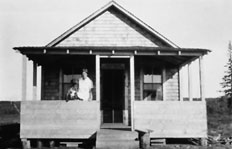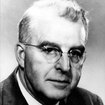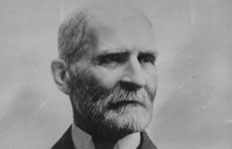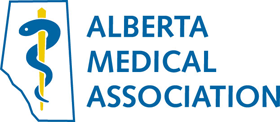Pioneering Alberta doctors
Patients First® for over 100 years

If you visit the Alberta Medical Association offices in Edmonton, you'll notice meeting rooms called Jackson, Brett, MacKay, Mewburn and Archer. These rooms honor Alberta physicians who provided exemplary care for their patients, often in isolated and difficult conditions.
The stories below are adapted from AMA member and medical historian Dr. J. Robert Lampard's Alberta’s Medical History (2008). We are grateful to Dr. Lampard for these fascinating stories with us. If you'd like to order Dr. Lampard’s book please call 403.346.0331 or email Dr. Robert Lampard.
1900-50

Dr. Lorne Tyrrell, 1943-
The results of Dr. Tyrrell’s research have saved the lives of thousands of people infected with hepatitis B.

Dr. Peter Cruse, 1927-2006
Dr. Peter Cruse's wound infection surveillance program at Calgary's Foothills Hospital dramatically decreased the infection rate among patients. He founded the U of C undergraduate medical history course that later extended to all Canadian faculties of medicine through the History of Medicine Days.

Dr. William Cochrane, 1926-2017
Dr. William A. Cochrane's career began in medicine and evolved through pediatrics, medical research, medical biotechnology into business.

Dr. Charles Allard, 1919-91
Gifted surgeon, successful entrepreneur, philanthropist and Oilers’ founder, Dr. Charles Allard packed several lifetimes into one life.

Dr. Walter Campbell Mackenzie, 1909-78
Among his many achievements, Dr. Mackenzie oversaw the opening of the first medical research facilities at the University of Alberta and greatly increased the U of A's number of medical undergraduates and residents. Edmonton’s University of Alberta hospital is named after him.

Dr. Mary Evangeline Percy Jackson, 1904-2000
A pioneering doctor in northern Alberta, Dr. Mary Evangeline Percy Jackson provided medical care over 2,600 square kilometers, often by horseback and dogsled.

Dr. Harold A. Hamman, 1901-1987
Dr. Hamman is the unsung hero of the 1929 mercy flight to protect Fort Vermilion residents against diphtheria.
1851-1900

Dr. John W. Scott, 1894-1982
Dr. John W. Scott, former Dean (1944), Faculty of medicine, University of Alberta (U of A), strongly believed “research should not be looked upon as a luxury but as a very necessary part of the activities of a medical school. It stimulates the minds of those who do it and makes them more dynamic and critical teachers.”

Dr. Earle Parkhill Scarlett, 1896-1982
Dr. Scarlett was in a class of his own as Canada’s scholarly medical historian or “medical truant” as he liked to be called.

Dr. James Bertram Collip, 1892-1965
Dr. James Collip played a vital role in the discovery of insulin.

Dr. Malcolm Ross Bow, 1887-1982
Serving as Alberta’s Deputy Minister of Health throughout the Depression, Dr. Malcolm Bow’s support for public health did not change despite hard times in the province.

Dr. J.J. (Johnny) Ower, 1885-1962
A physician who responded to Germany's first chlorine gas attack during World War 1, the first Professor and Chair of the University of Alberta's Department of Pathology and later Dean of Medicine, Dr. J.J. Ower played a key role in Alberta medicine over several decades.

Dr. Heber Carss Jamieson, 1879-1962
Athlete, novelist, medical historian and practical joker, Dr. Heber Carrs Jamieson was one of the first to track the legacy of the early Alberta medical pioneers.

Dr. Albert Ernest Archer, 1878-1949
Dr. Albert Archer was the founder of the first hospital in Lamont and an influential and early supporter of a national health program.

Dr. Allan Coats Rankin, 1877-1959
Dr. Rankin played a leading role in the development of a degree-granting University of Alberta medical undergraduate curriculum, guiding the faculty for its first 25 years. Earlier in his career, he took a more exotic route — researching beriberi in Thailand and working with troops in the trenches of the First World War.

Dr. Richard Barrington Nevitt, 1874-1978
Dr. Nevitt arrived in Alberta in 1874 after participating in the March West (a 1,600 km trek) from Manitoba with members of the newly formed North West Mounted Police.

Dr. John Sinclair McEachern, 1873-1947
Dr. McEachern helped to rescue the CMA from near bankruptcy in 1921 and to persuade the members of provincial medical associations to federate with the CMA to create a voice for all Canadian physicians.

Dr. George Henry Malcolmson, 1868-1944
Dr. Malcolmson cared for the victims of the Frank Slide disaster and was Alberta's first radiologist.

Dr. Henry George, 1864-1932
An early doctor in Calgary and Innisfail, Dr. Henry George treated Chief Crowfoot during his last illness.

Dr. Edward Ainslie Braithwaite, 1862-1949
Edward Ainslie Braithwaite was in the thick of the North-West Rebellion as an unofficial "medical officer" to troops and as one of the soldiers who escorted the captured Louis Riel to Regina for his trial. He later became a respected physician in Edmonton and was instrumental in building Edmonton's first hospital.

Dr. George Allan Kennedy, 1858-1913
Dr. George Allan Kennedy saved the life of a future prominent Alberta lawyer, both with surgery and by draining and dressing his infected chest following a gunshot wound.

Dr. Harry Goodsir Mackid, 1858-1916
Pioneering Calgary physician Dr. Harry Goodsir Mackid was a leader in communicable disease control and a partner in Calgary’s first group medical practice.

Dr. Frank Hamilton Mewburn,1858-1929
Dr. Frank Mewburn's first surgery in Lethbridge took place on a pool hall table with the local barber giving anesthesia.

Jane Flett MacKay, 1857-1947
Married to a doctor, Jane Flett MacKay acted as her husband's nurse and sometimes as a surgeon in her own right.

Dr. Robert George Brett, 1851-1929
When Dr. Brett worked for the CPR, many of his surgeries took place in a boxcar equipped as an operating room. Later, he founded his own hospital in Banff.
1800-50

Dr. Leverett George deVeber, 1849-1925
Athlete, soldier, physician and politician, Dr. deVeber led an action-packed life that led him from the North West Mounted Police and the Rocky Mountain Rangers to the Senate in Ottawa.

Dr. James Delamere Lafferty, 1849-1920
A key figure in professionalizing the practice of medicine on the Prairies, Dr. Lafferty was involved in founding both the CPSA and the AMA.

Dr. William Morrison MacKay, 1836-1917
One of the first doctors in Alberta, Dr. MacKay almost didn't survive the trip from London when his ship ran aground in Hudson's Bay.

Dr. John Rae, 1813-1893
Dr. Rae solved the mystery of what happened to the Franklin Expedition and completed the mapping of the northern Canadian coastline and northwest passageway.

